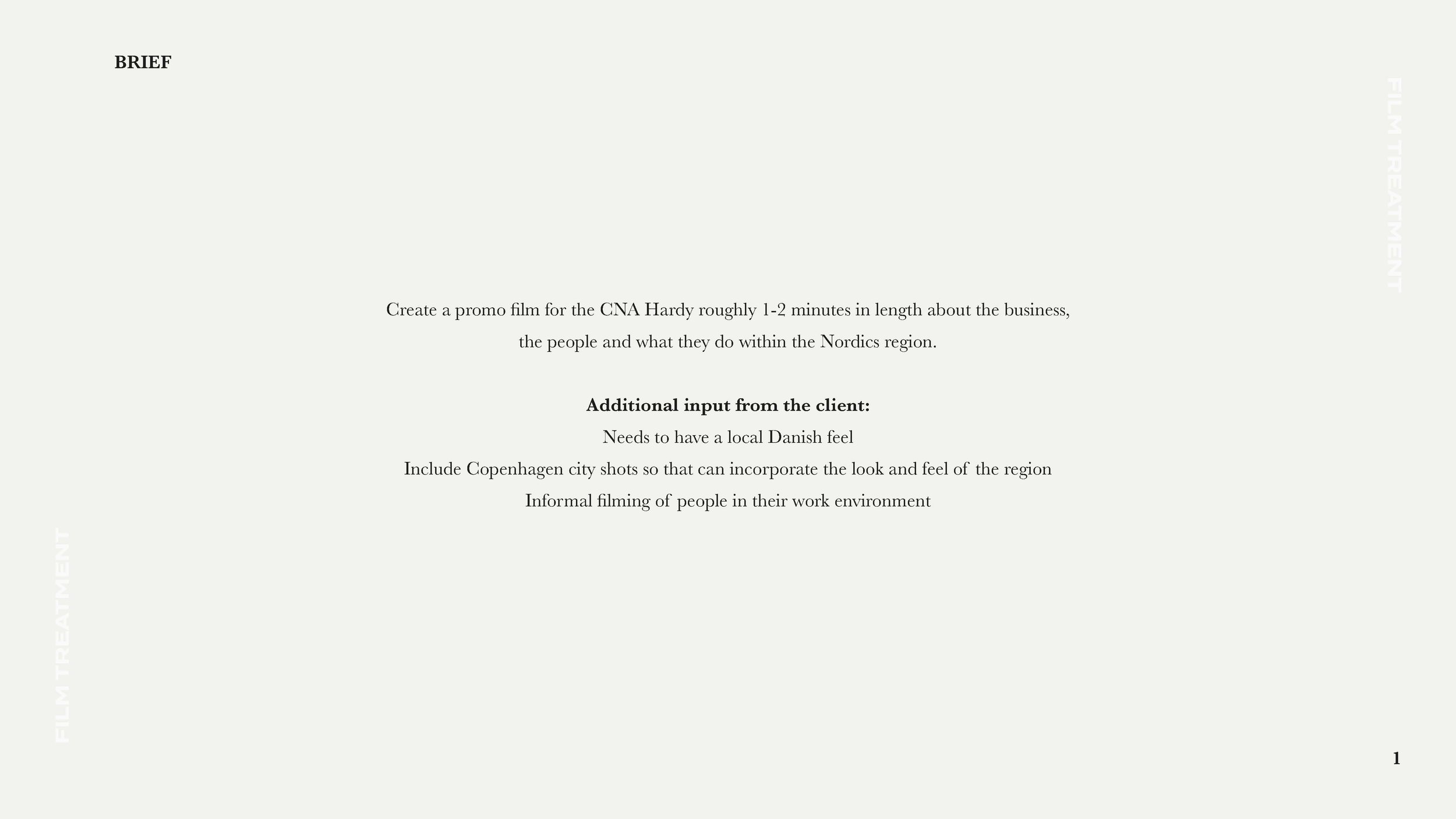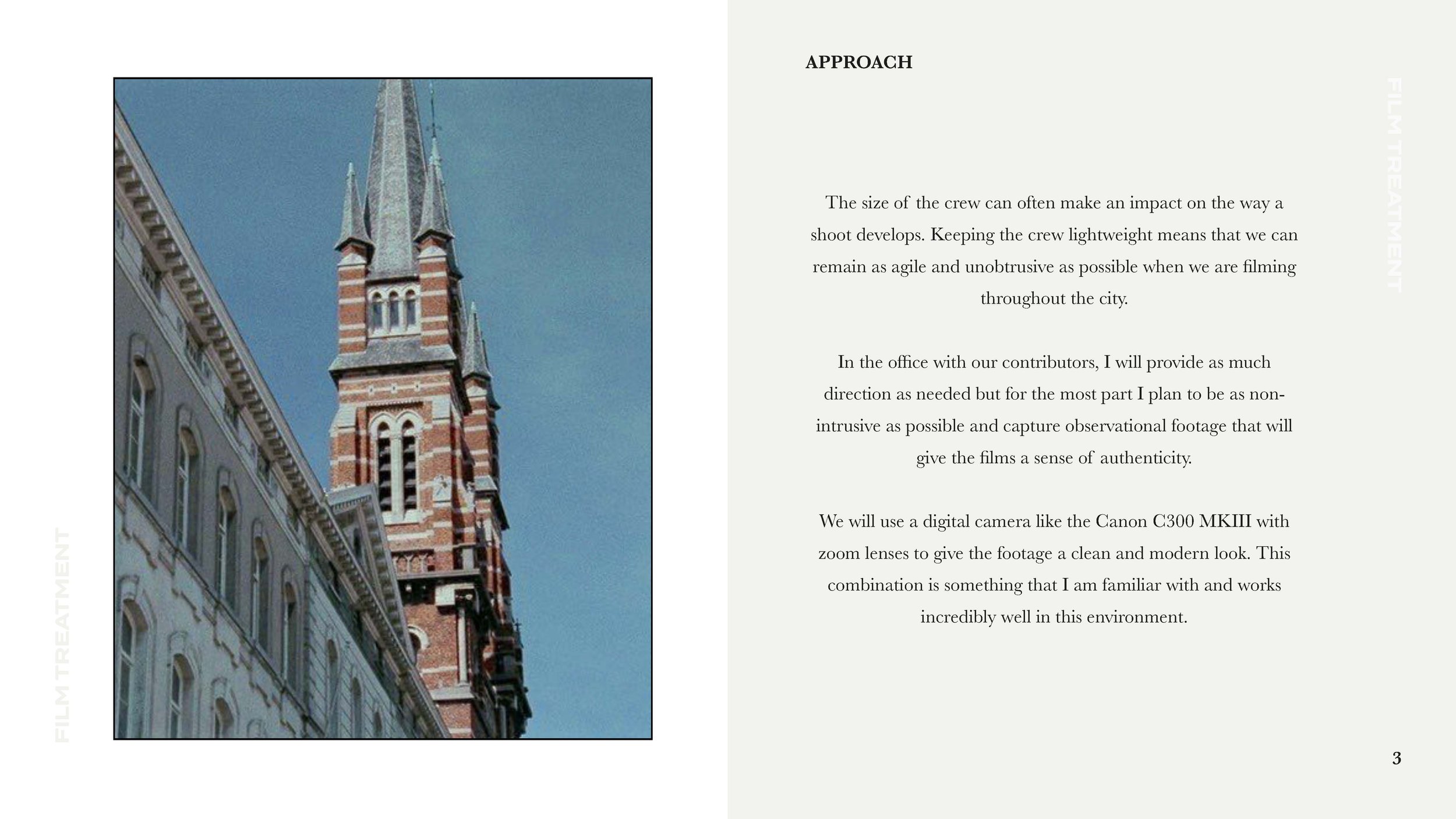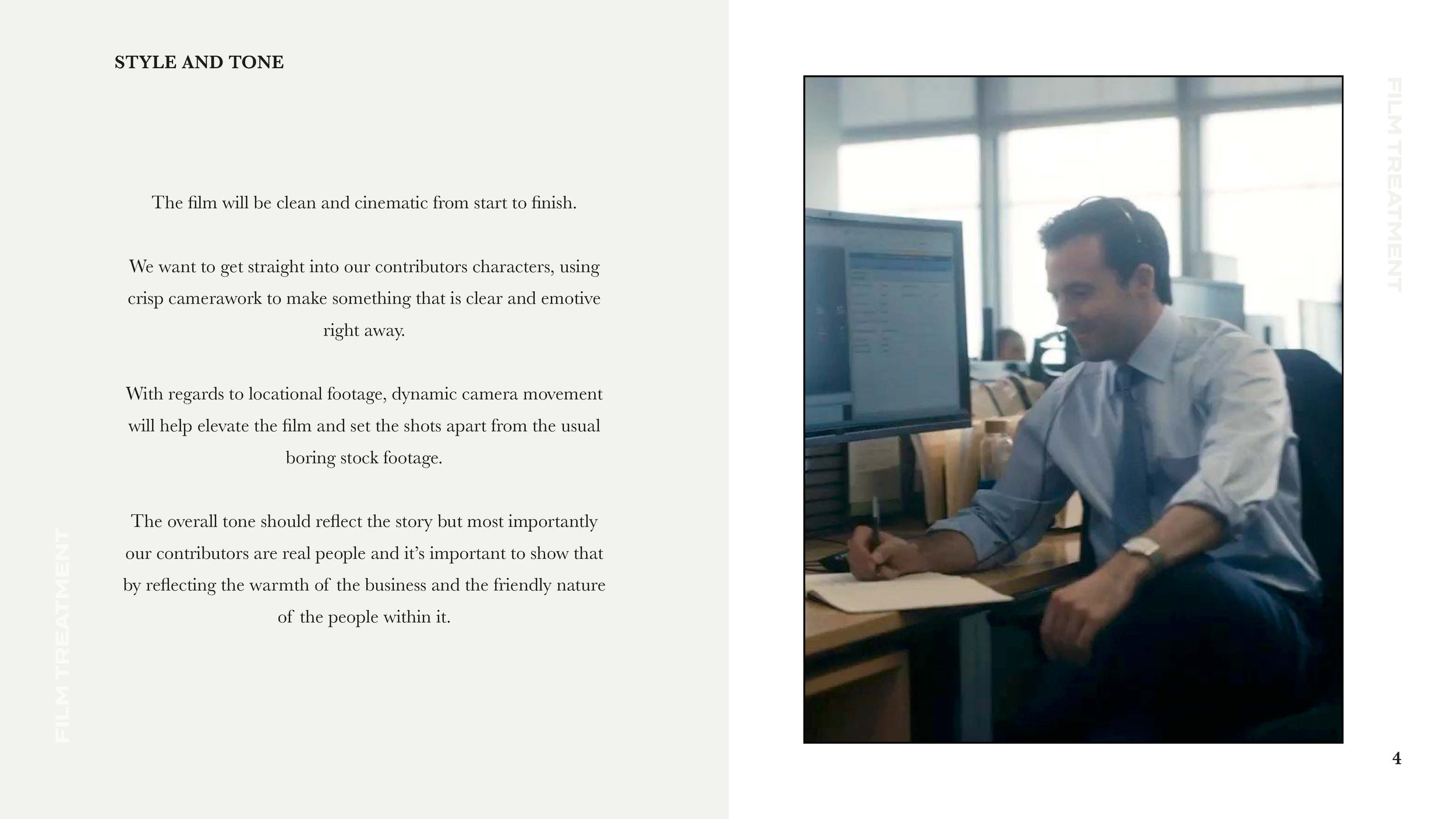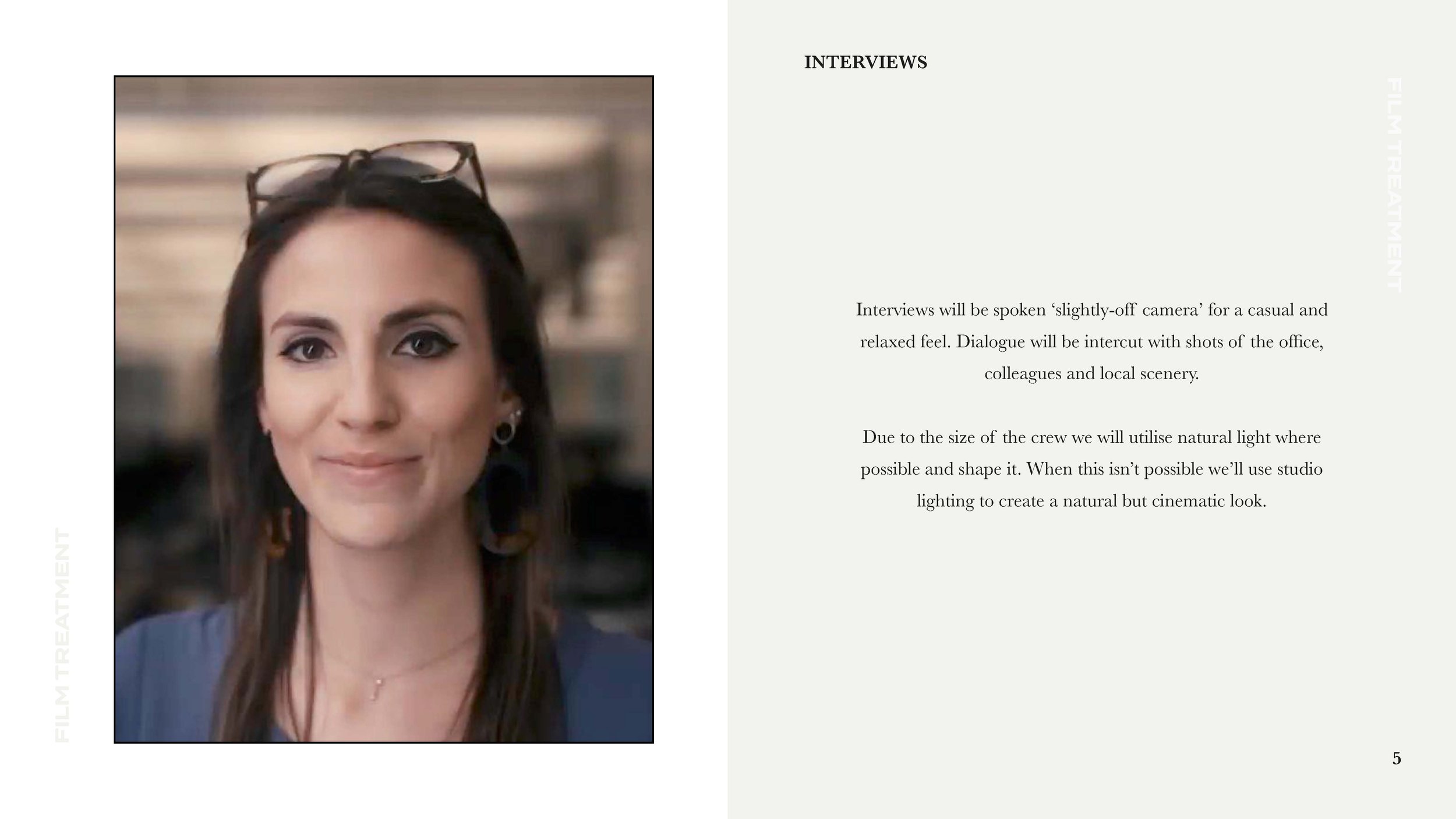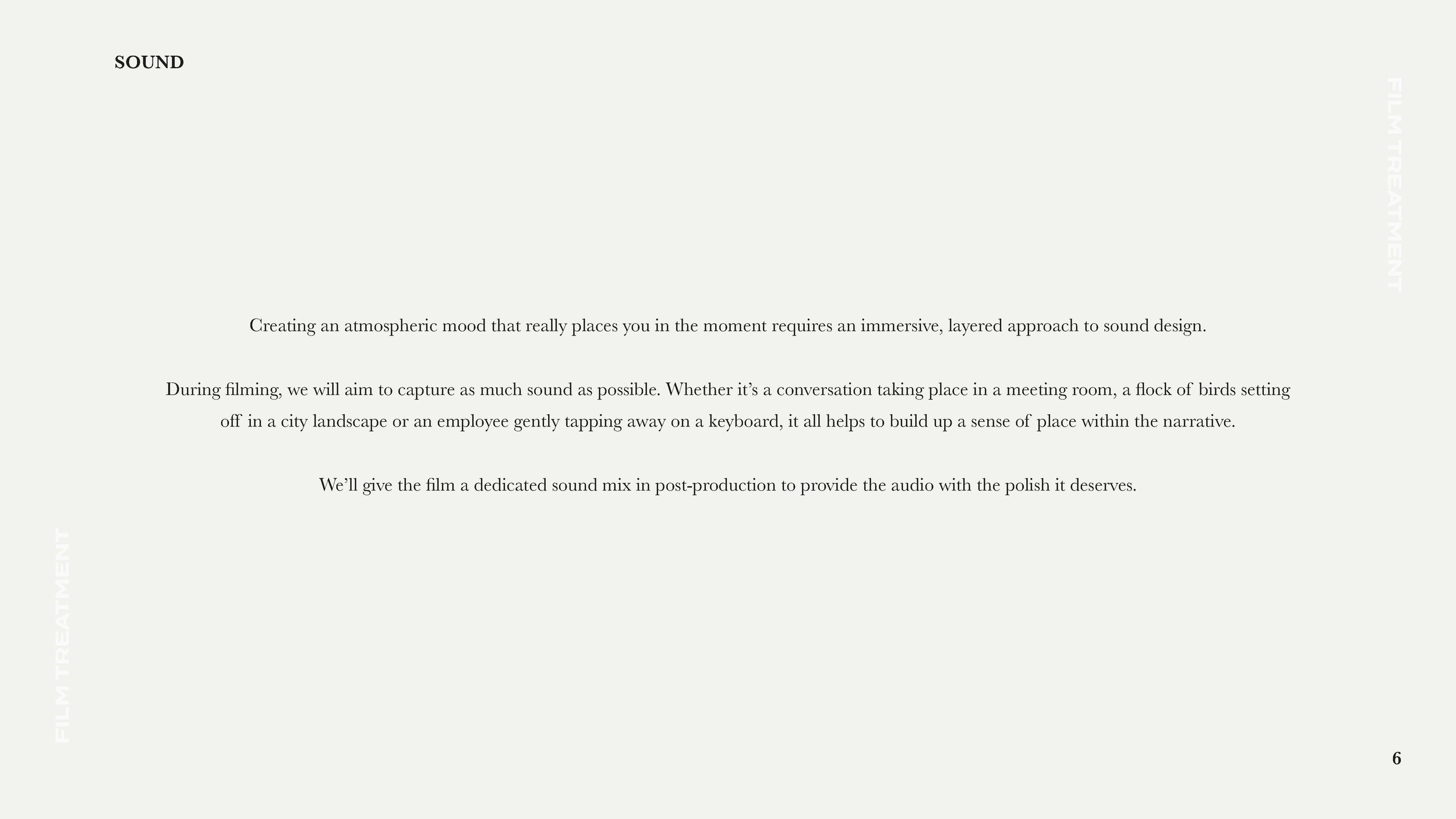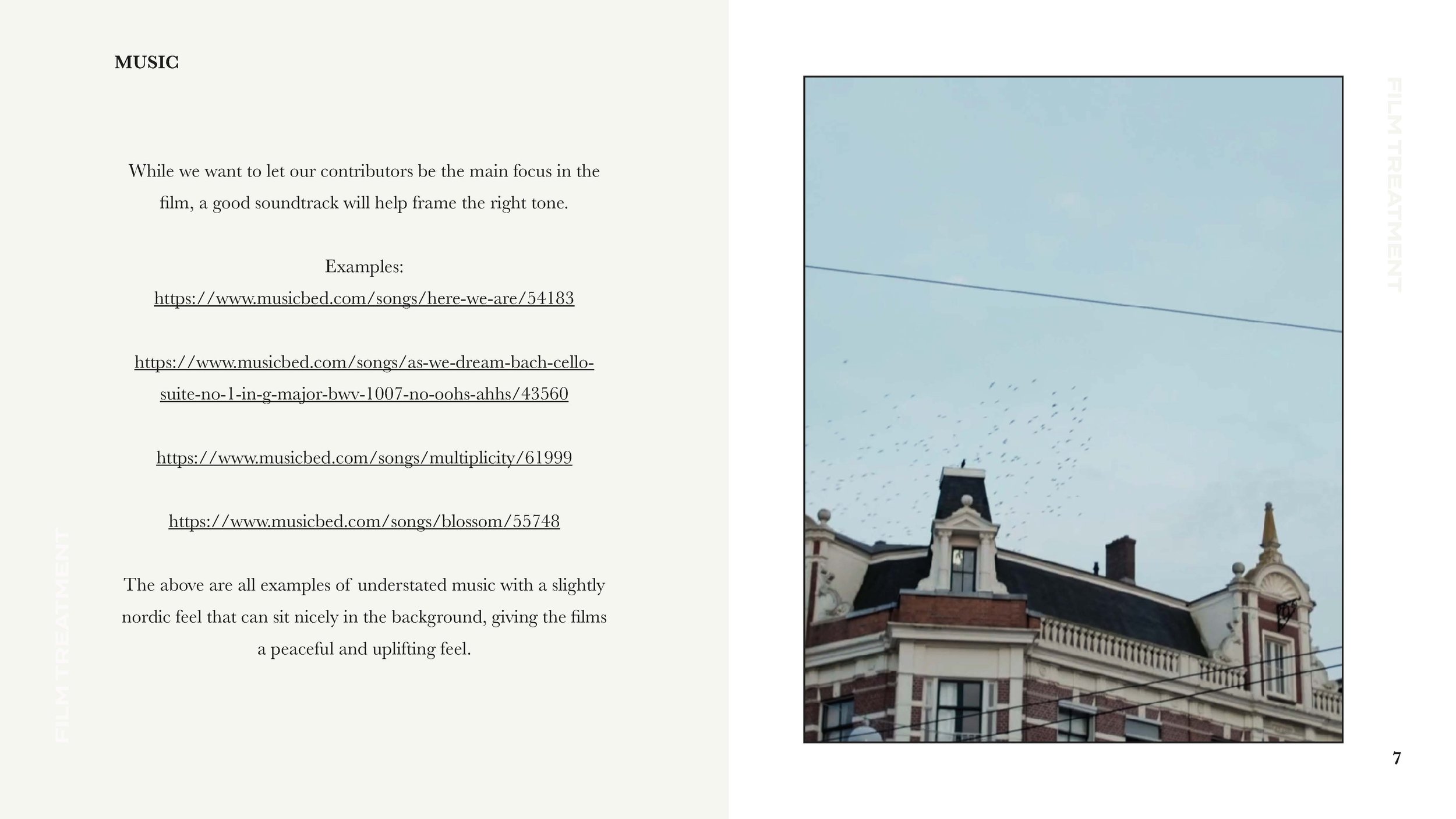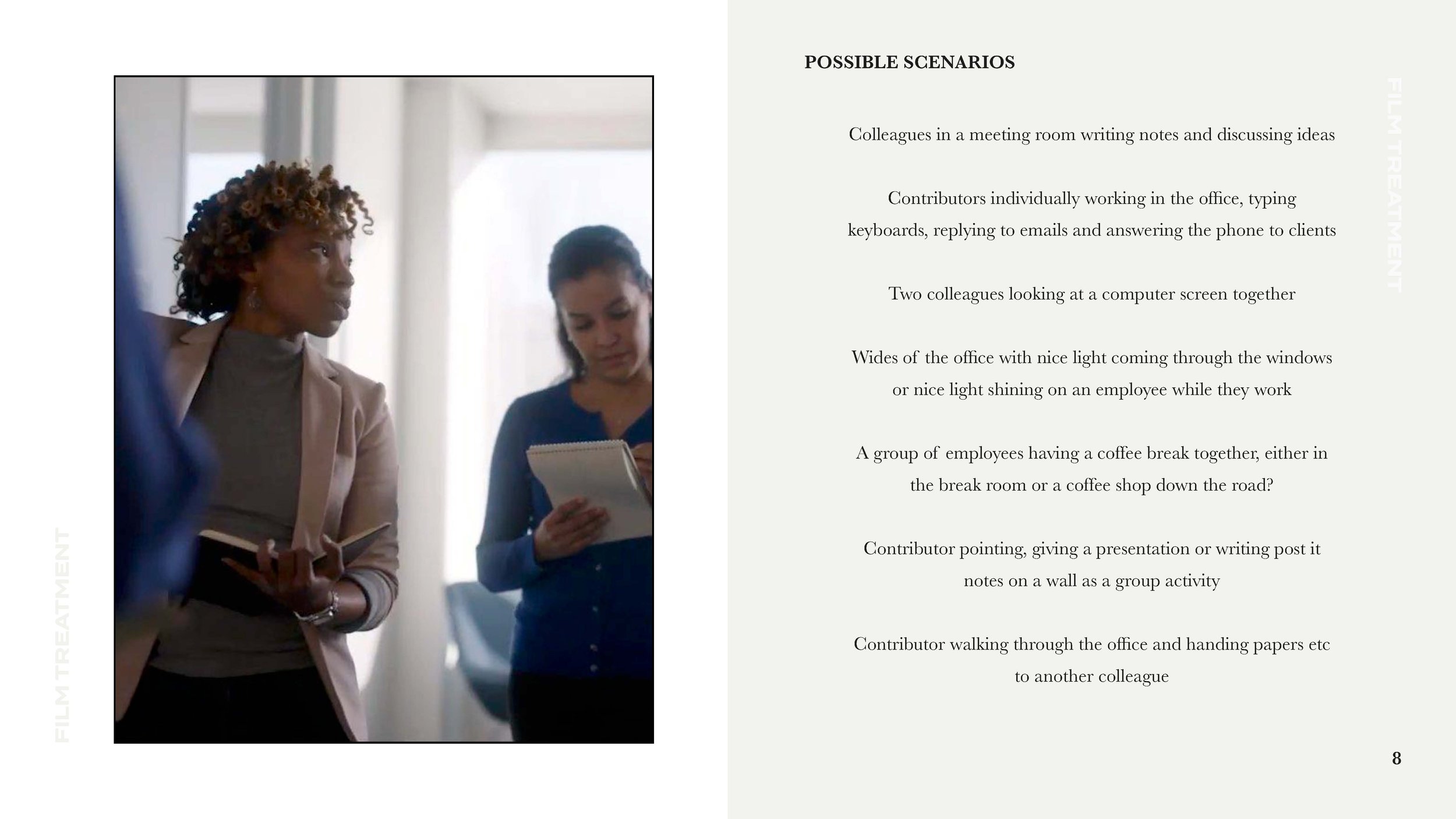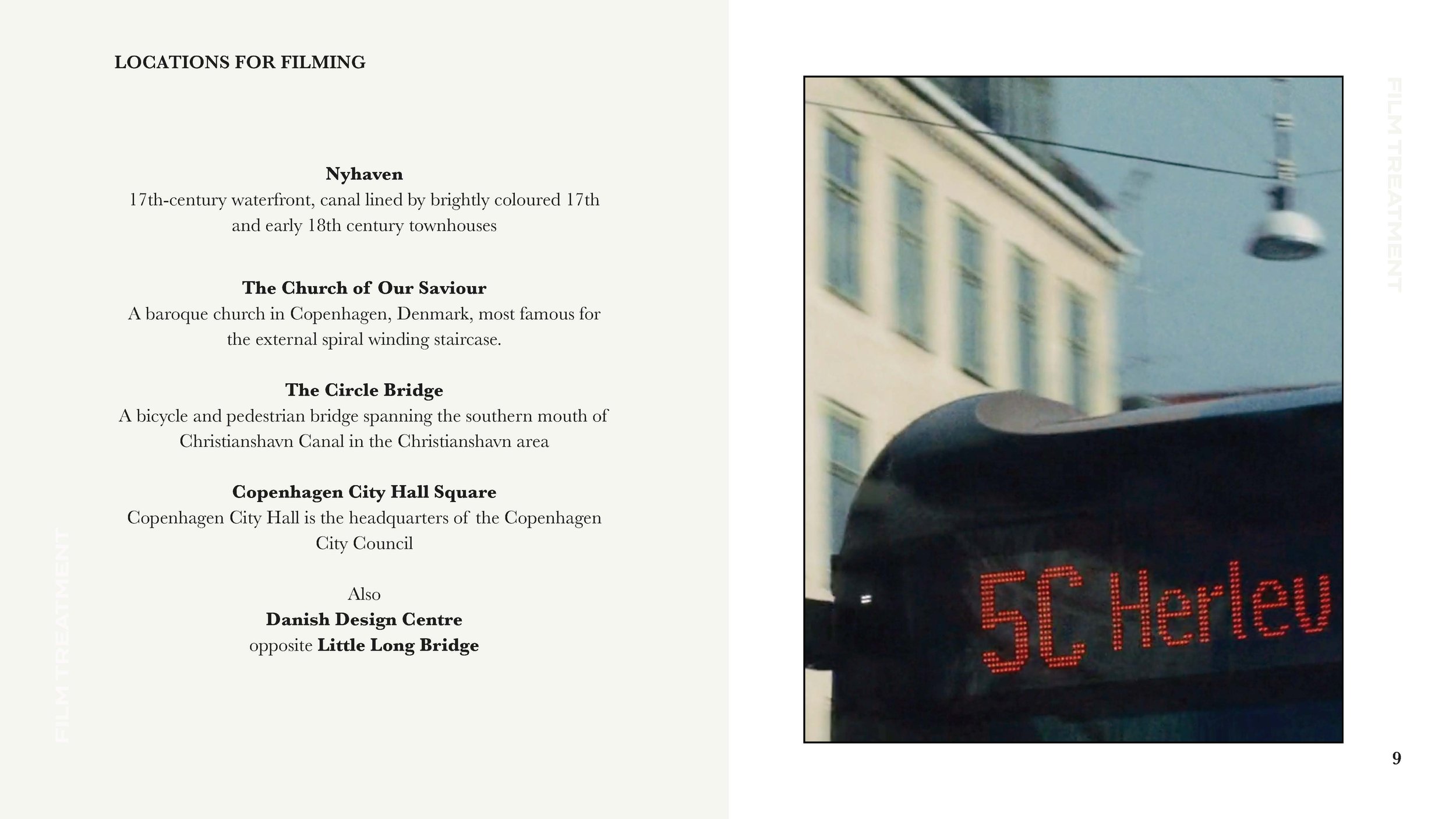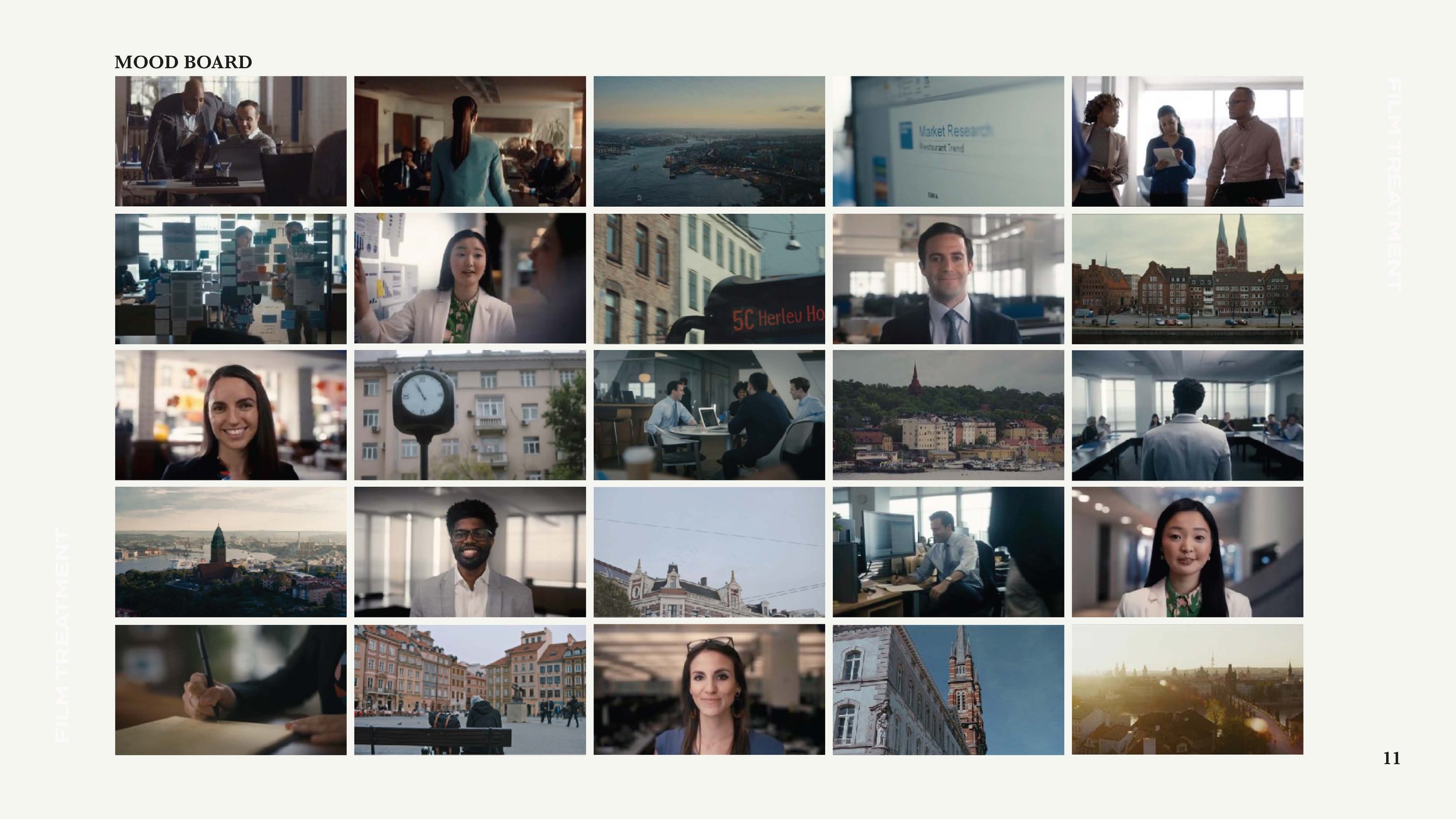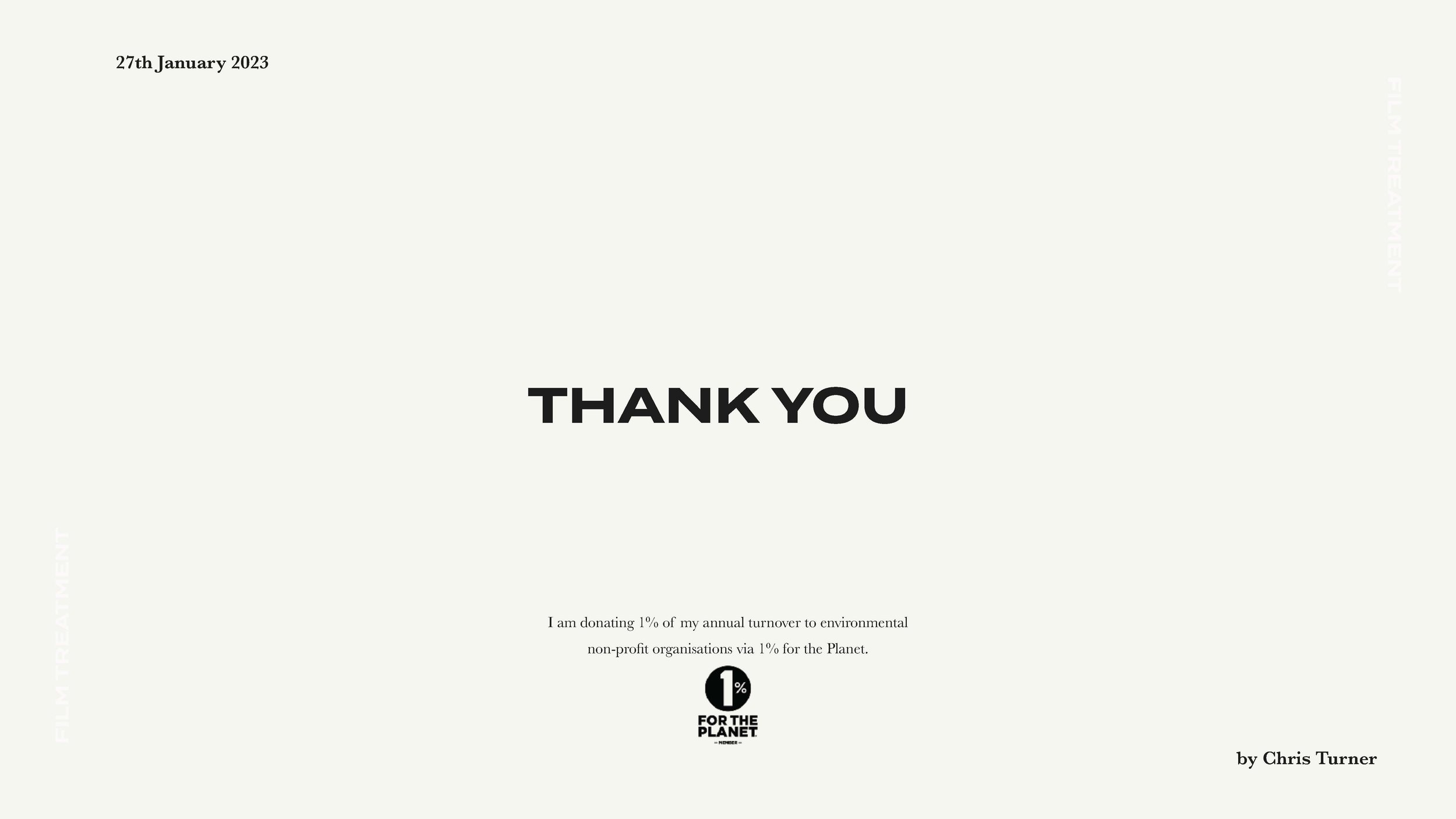What should you include in a film treatment?
As a Videographer and Filmmaker who often takes a project from the inception of an idea through to delivery, writing a film treatment is an important step in the video production process. It helps to ensure that everyone involved is on the same page - and that the client is happy with what they are paying for!
A good film treatment should be engaging, well-written, and provide a clear sense of the narrative and creative vision. It should also be tailored to the needs of the project and the intended audience, whether that's the client, a potential investor you’re pitching to or a fellow filmmaker.
A film treatment could include the following elements:
The Brief: This for most people will come from your client, it outlines the key objectives, requirements and final outputs for the project.
Your Concept: Is a response to your client's brief - a strong film concept is a key element in securing the client's approval and moving forward with the project.
Approach: For example, a filmmaker may choose to take a documentary-style approach, which emphasizes realism, authenticity, and the use of real people and events to tell a story. Alternatively, a filmmaker may take a more stylistic approach, using dynamic camera techniques, lighting, and visual effects to create a specific mood or atmosphere.
Style and Tone: The style and tone of a film refers to the overall aesthetic and emotional qualities that are conveyed through the visuals, sound, and storytelling of the movie. The style of a film encompasses its visual and auditory elements, such as cinematography, lighting, editing, sound design, and music, as well as its overall pacing, structure, and narrative techniques. The tone of a film, on the other hand, refers to its emotional atmosphere and mood, which can be conveyed through elements such as the performances of the actors, the use of color and composition, and the pacing and structure of the storytelling.
Shot List: A shot list is an important element of a film treatment, it provides a detailed step-by-step breakdown of the shots and camera angles that will be used to tell the story.
References: These are typically used to provide context or inspiration for the story being developed. References might include video links, photographs, sketches, or artwork that helps to visualise your concept for the film.
Mood Board: A mood board is a collection of images, textures, colors, and other visual elements that are used to further more convey the tone, atmosphere, and overall mood of a creative project. In the context of film treatments, a mood board can be a valuable tool for communicating the visual style and feel of a proposed concept.
Below is an example of a film treatment I wrote for a recent project:
As you can see I like to ‘flesh out’ elements like the approach to interviews and stylistic choices with regards to sound and music. In this instance as we were shooting a lot of locational imagery and the project was overseas, so I did a google earth recce to ensure that we could hit the ground running.
I might add that sometimes things don’t always go to plan, in more cases than not with documentary projects but if you have taken the time to plan the project well in advance you will always be prepared to pivot and take control of the situation. The film treatment is always there to guide you back home.
I’m pleased to say that regardless, in this case the shoot went extremely well and the client was beyond pleased with the final results.
Below is an example of the final product:

